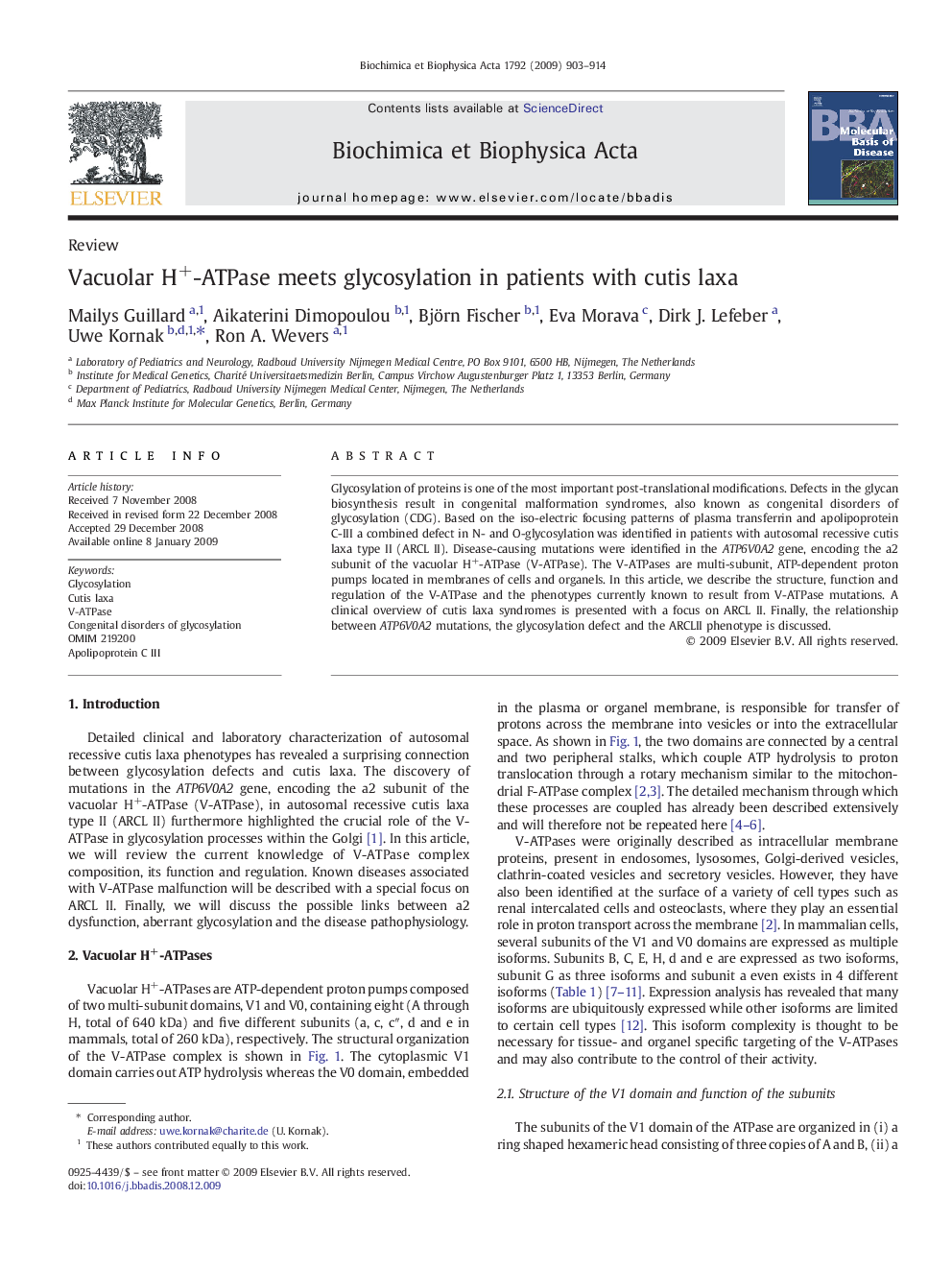| Article ID | Journal | Published Year | Pages | File Type |
|---|---|---|---|---|
| 1905552 | Biochimica et Biophysica Acta (BBA) - Molecular Basis of Disease | 2009 | 12 Pages |
Glycosylation of proteins is one of the most important post-translational modifications. Defects in the glycan biosynthesis result in congenital malformation syndromes, also known as congenital disorders of glycosylation (CDG). Based on the iso-electric focusing patterns of plasma transferrin and apolipoprotein C-III a combined defect in N- and O-glycosylation was identified in patients with autosomal recessive cutis laxa type II (ARCL II). Disease-causing mutations were identified in the ATP6V0A2 gene, encoding the a2 subunit of the vacuolar H+-ATPase (V-ATPase). The V-ATPases are multi-subunit, ATP-dependent proton pumps located in membranes of cells and organels. In this article, we describe the structure, function and regulation of the V-ATPase and the phenotypes currently known to result from V-ATPase mutations. A clinical overview of cutis laxa syndromes is presented with a focus on ARCL II. Finally, the relationship between ATP6V0A2 mutations, the glycosylation defect and the ARCLII phenotype is discussed.
